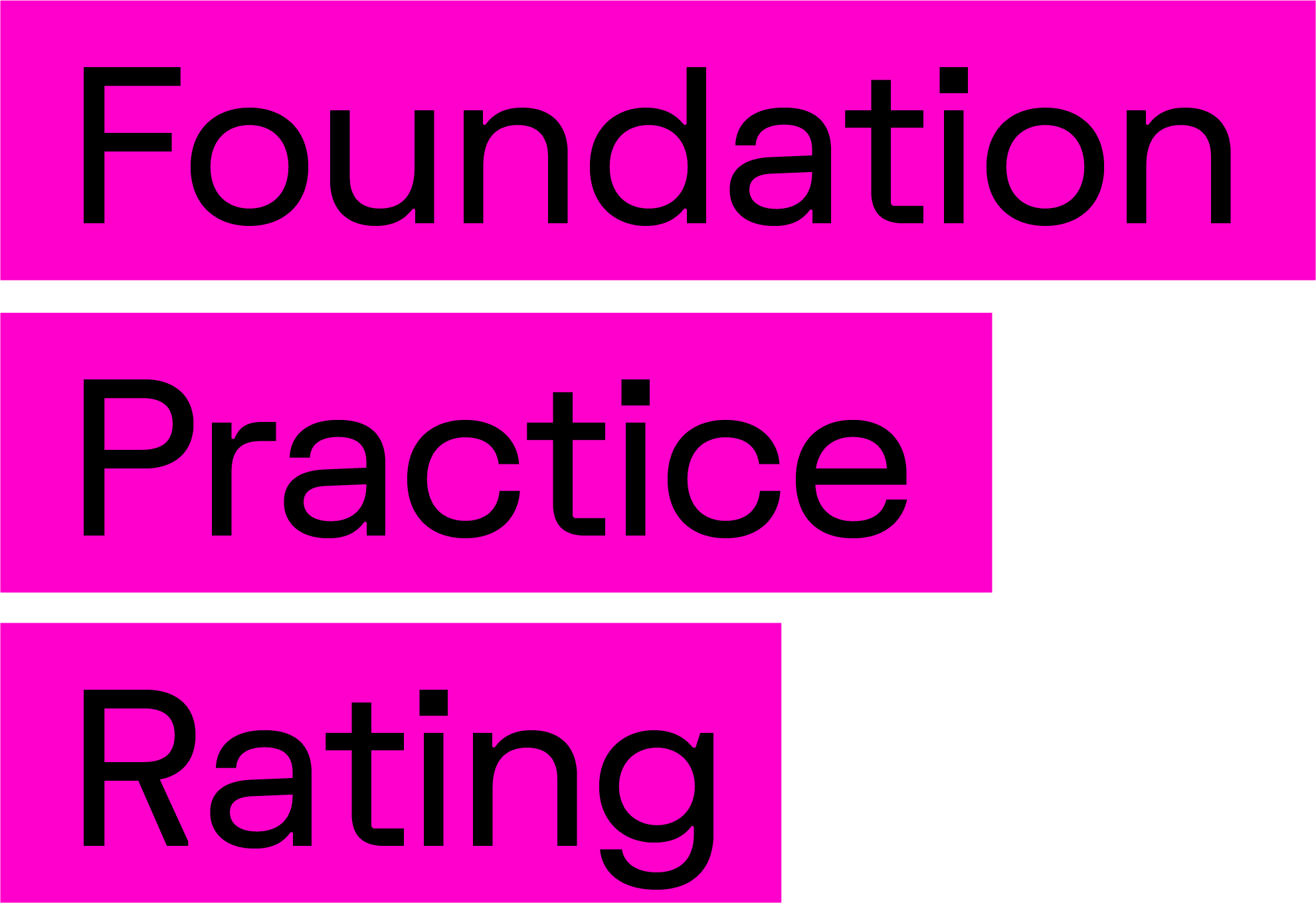Number of foundations achieving each rating –
both overall, and within each pillar.
Overall Rating
This graph illustrates a breakdown of how the assessed foundations faired overall.
Diversity
This graph illustrates a breakdown of how the assessed foundations faired on the diversity pillar.
Foundations which scored A’s overall
Only three foundations achieved an overall rating of A: the Wellcome Trust, the Blagrave Trust, and the County Durham Community Foundation. A first observation is how varied those three are: one is the largest foundation in Europe, with assets of £24 billion; one has assets of around £42 million; and one is a fundraising community foundation, which is around the middle of the sample by giving budget size. This suggests that good practice is not dependent on any one structure or size.
Foundations which scored B’s overall
41 foundations got a B overall. All those who got a B overall only achieved a C grade in the Diversity pillar. The other two pillars were different. For accountability: 37% of the foundations scored A, 34% scored B and 29% scored C. For transparency: 95% of foundations scored an A and 5% scored a B – this illustrates that foundations are generally good at being transparent.
Foundations which scored C’s overall
28 foundations scored a C overall. Most foundations in this bracket scored a D in diversity, again illustrating the work the sector has to do to improve on diversity. Accountability and transparency had a mixture of different scores. For accountability, the most common grade is C, and for transparency, the most common grade was a B.
Foundations which scored D’s overall
The last graph shows those who scored a D and its breakdown. 28 foundations overall got a D grade. All foundations in this group got a D on diversity. Additionally, most of the foundations got a D in accountability and transparency.
These graphs illustrate that most foundations are pretty consistent in their practice: few are great at some things and very poor at others. Similiarly, those foundations that achieved A overall scored B on diveristy; and that those that scored D overall did marginally better on accessibility and transparency than they did on diversity.
A main finding is that practice on diversity is weaker than practice on the other pillars. No foundation scored A on diversity, whereas many of the foundations were rated A on the other two pillars: 51 for transparency and 18 for accountability. This can also be seen by looking at the average scores across all 100 foundations on each pillar (Figure 6): the average grade for transparency is B, for accountability C, but for diversity it is a D.
Questions on which the foundations collectively scored highest
Does the foundation have an investment policy?
As mentioned earlier, this is a legal requirement for some foundations, although not all.
Does the foundation publish who its staff are on its website (this can be senior staff only or all staff, either is a ‘yes’)? N/A if they have no staff, this can usually be verified on the relevant charity regulator’s website.
Is there contact information provided on the foundation’s website? If the foundation has no website the answer is ‘no’.
Does the foundation give any information on who or what it funded?
The number of items of information provided about the awarded grants? a) name of grantee, b) award date, c) description/title, d) amount awarded and/or e) duration.
Does the foundation have a website?
Can you navigate the foundation’s website using only the keyboard (without a mouse)? If the foundation doesn’t have a website, enter ‘no’.
The number of items stated in a foundation’s investment policy (maximum of eight). Section 4.3 of the Charity Commission’s guidance about investment policies cites eight elements that an investment policy should cover.
Does the foundation publish on its website any information about its funding priorities?
Does the foundation state how to apply for funding?
Questions on which the foundations collectively scored lowest
Does the foundation publish a breakdown of the diversity of its trustees/board members? (with respect to gender, ethnicity and disability only).
We used those three dimensions because those are the three on which the UK Equality and Human Rights Commission provides advice on how employers can measure and report on pay gaps (https://www.equalityhumanrights.com/en/pay-gaps).
The number of ways given for contacting the foundation concerning malpractice. e.g. email, phone number, on-line form, mailing address web-chat, BSL, text relay, or any others.
The items included in the foundation’s plan to improve the diversity of its trustees/board members, e.g. targets for women, BAME staff, LGBTQIA+ and/or disabled trustees.
If the foundation funds recipients in Wales, is a Welsh language format provided? ‘N/A’ if the foundation does not have a presence in Wales.
Does the foundation’s plan to improve the diversity of its staff include specific, numerical targets?
Does the foundation’s plan to improve the diversity of its trustees/board members include specific, numerical targets?
The items included in the foundation’s plan to improve the diversity of its staff, e.g., targets for women, BAME staff, LGBTQIA+ and/or disabled staff?
The number of ways that the foundation gives to contact it if you are disabled? (text relay, BSL or other)
Is there a mechanism to report malpractice concerns? (whistleblowing)?
Examples of particularly good practice
